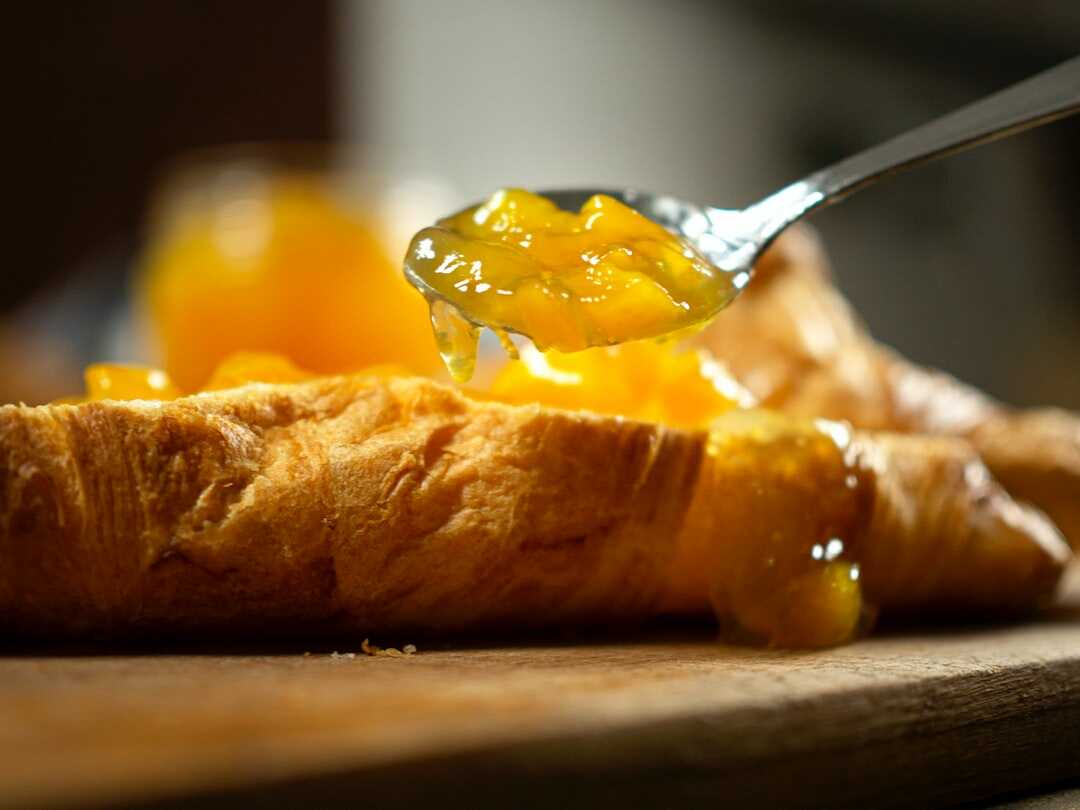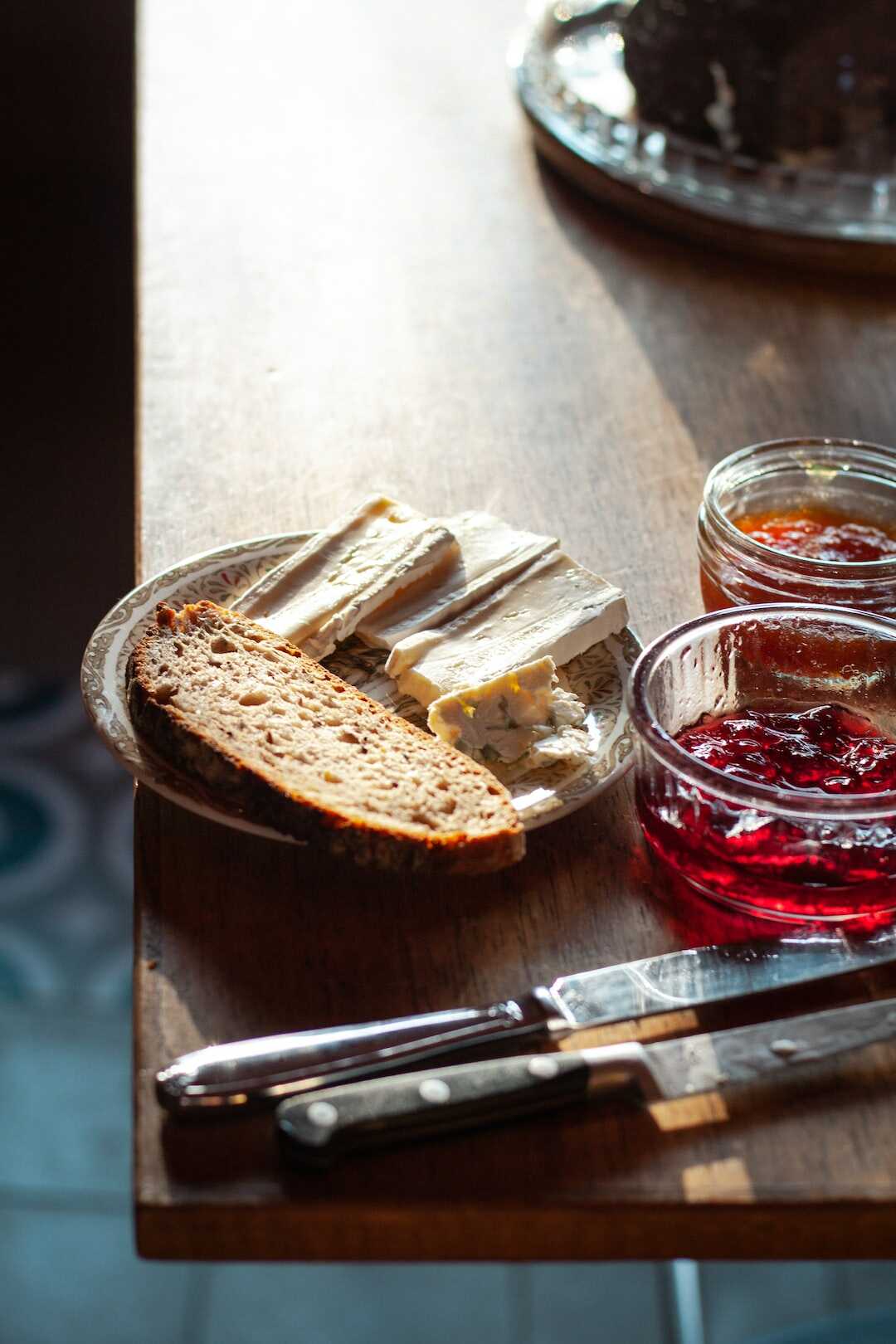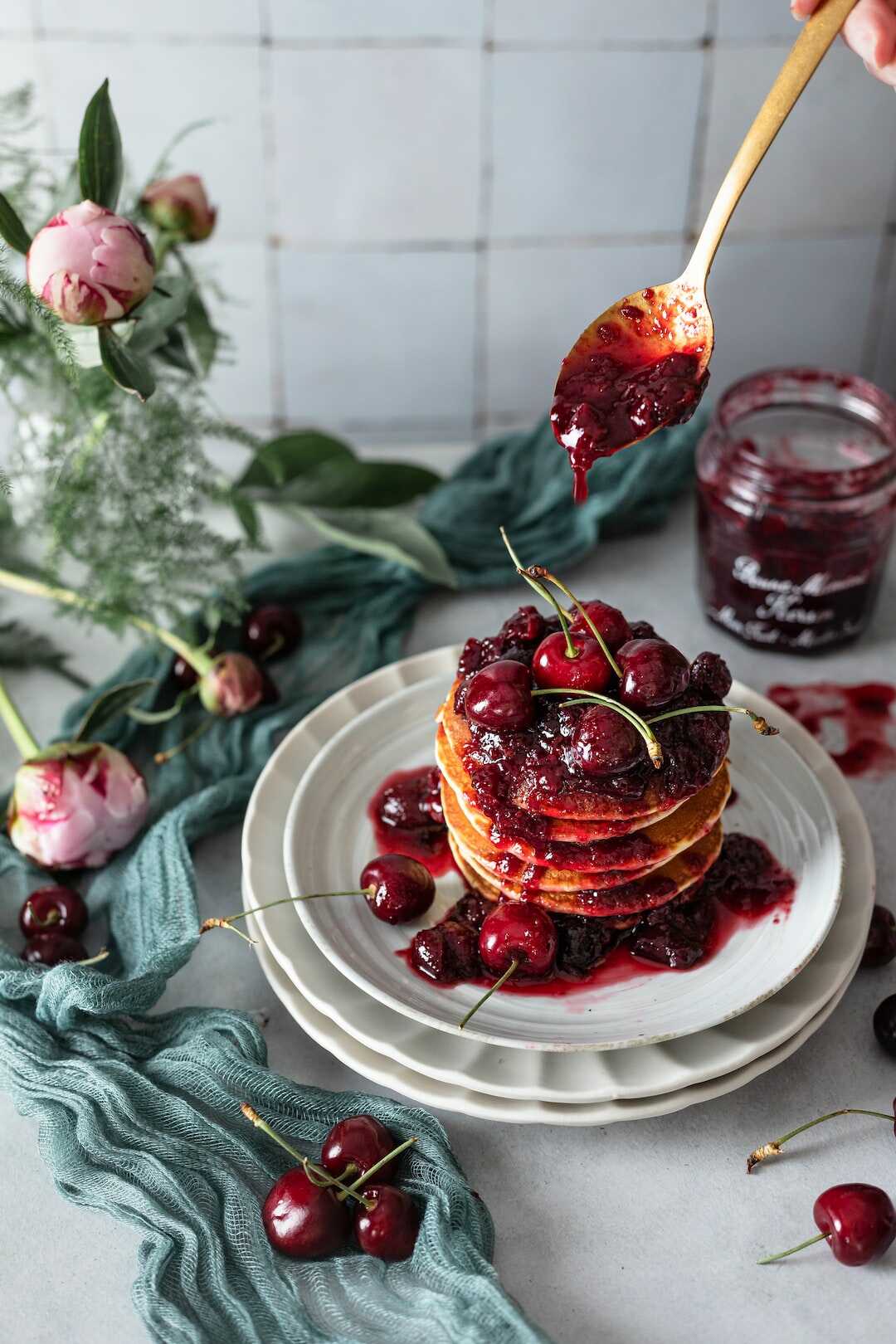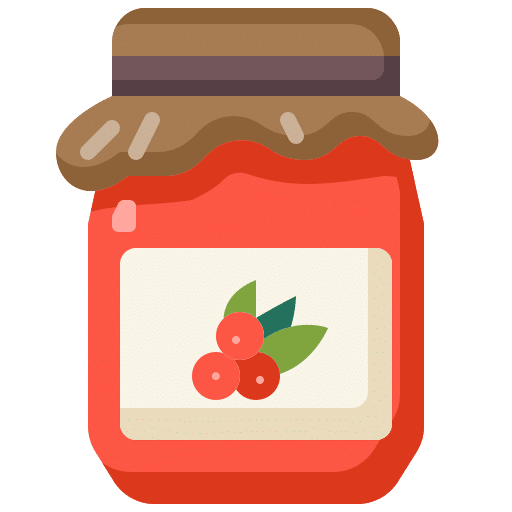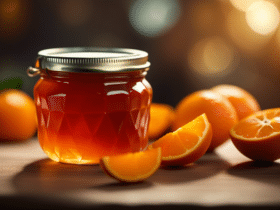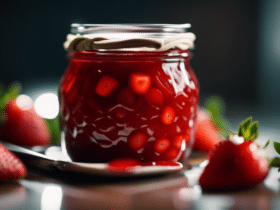“ Lemon juice prevents the function of dissociating acid from pectin. ” in effect to add pectin.
What is the minimum amount of sugar for jam?

According to the official text, for a jam to be recognized as such, it must contain a maximum of 40% sugar and 60% fruit. This sugar level corresponds to what is necessary for optimal preservation of all fruits. Below, the jam will not keep well.
Which sugar to make jam? Twice as large as conventional powdered sugar, white granulated sugar is most often used by gourmets to prepare jams.
How to put less sugar in jam? To make jam without added sugar, you can take inspiration from a baking technique that uses fruit juices. The technique is simple because you just brown the juice over high heat and use the syrup that has been cooked as a sugar substitute.
Why lemon juice in jam? Lemon juice maintains the color of the fruit by preventing oxidation when cut. It emphasizes the fruity taste. It accelerates the regulation of congestion by acting on pectin. A must for jam!
How to substitute lemon zest?

You can use lime zest or orange zest instead of lemon zest. Candied orange peel, lemon juice, lemon oil, or lime or lime extract are also great alternatives.
How to make lemon extract? Preparation
- Collect the zest from the lemon using a peeler or a zester. …
- Place the zest in a glass jar (like a jam jar) and cover with 20 cl of alcohol.
- Close the jar and store it in a cool, dark place for 15 days.
How to replace lemon with fish? For a savory dish Replace the lemon juice provided in your recipe with equal amounts of lime juice or orange juice, or use half the amount of white vinegar or white wine.
How much lemon zest? Measure with a tablespoon the amount of peel obtained that you are going to work with for each citrus fruit. With 4 tablespoons of zest (2 each), sprinkle evenly over the entire dish.
How to extract pectin from lemon?

Push the fork into the motton and gently stir 20 turns. Carefully remove the fork, keeping it straight. If the lumps stick together for longer than two seconds, the liquid is too concentrated in pectin and should be diluted with a mixture of three parts water to one part lemon juice.
How is pectin made? Commercial pectins, including those often used to thicken jams and jellies, are extracted from dried apple pomace. It is sold in liquid or crystalline form. There is also gelling sugar to which pectin has been added.
Where is the pectin in lemons? Citrus peels are most commonly found because they are made up of 30% pectin. Unmodified pectin is a form of vegetable carbohydrate with gelling power and soluble in water. It captures heavy metals, but is difficult to assimilate.
Why is the jam too runny?

Why did this happen? some fruits naturally do not contain enough pectin, which prevents the jam from setting, the fruit is too full of water and suddenly the fruit/sugar ratio becomes distorted or you have not cooked the jam enough. .
How to thicken jam that is too runny? If we feel that our jelly or jam does not have the desired texture, then we can compensate by pouring a small amount of gelatin into the jam (chilled, about 2 grams to 1 kg of fruit) before reheating, stirring well and waiting. the magic happens when a traffic jam occurs…
Can liquid jam be stored? The fact that the jam is liquid does not affect the conservation.
How do you know if the jam is done?

Using a thermometer is a pro tip (the theoretical cooking temperature is 105°C). To check more simply that the jam is well cooked, do a dripping test placed on a cold plate: the jam must harden quickly, otherwise continue cooking.
How to harden the jam? To make your homemade jam even more textured, simply add chopped apple, apple juice or apple pectin. To do this, simply cook the jam again, adding apple pectin.
When to return jam jars? When the jam is ready, you can pour it into the jars while still hot. Once the jar is closed, it is very important to turn the jar upside down. This step is important because it allows the jam to be preserved as much as possible.
Does the jam harden as it cools? When making jam with fruits that are high in water and low in pectin (such as apricots, peaches or nectarines for example), it often happens that once cooled, the pectin is not strong enough. .
When to add lemon juice to jam?
Lemon juice contains ascorbic acid (vitamin C) which inhibits oxidation. Added to the fruits at the start of cooking, it retains its color. This prevents crystallization of the sugar.
How to replace lemon in jam? To replace a teaspoon of lemon juice, add half a teaspoon of vinegar. As for vinegar, choose a mild taste. Rice or cider vinegar will work just fine.
How to drain rhubarb quickly?
You can soak your rhubarb pieces in cold water with a spoonful of baking soda, for about 40 minutes. Those in a hurry can also boil their rhubarb sticks for a few minutes in boiling water.
How to make rhubarb jam less acidic? The most practical way to remove the acidity from your rhubarb is to salt it overnight in powdered sugar. To do this, cut the rhubarb stalks into pieces or dice then cover them with sugar. Let’s stand.
Should you peel the rhubarb? Rhubarb is a vegetable native to Asia, from the same family as sorrel and buckwheat, which is eaten most of the time as a fruit. It is not always necessary to peel the stems. Only the larger ones, which are more fibrous, should be peeled off.
Why macerate fruit for jam?
It promotes the preservation of the jam and activates the pectin. Pectin: this is what makes the jam “set”, mixed with sugar. …I don’t really like to associate it with traffic jams anyway. Cooking in two stages: The fruits can be macerated in lemon juice and sugar the day before.
What fruit for jam? Apricot, pineapple, banana, peach, nectarine, cherry, lemon, quince, fig, strawberry, raspberry, currant, kiwi, mango, chestnut, melon, mirabelle plum, blackberry, blueberry, citrus fruits, pear, apple, plum, plum, rhubarb € The choice is very wide in terms of fruit jam!
How to make a jam? To make the jam, cook for 20 to 45 minutes (depending on the fruit used) over high heat, uncovered, stirring frequently to prevent it from sticking to the bottom. It is also necessary to skim regularly, because the foam which forms is useless and does not add flavor!
How do I know if the quince jelly is taken?
Ideally, if you have a better cooking thermometer, when the jelly reaches 103°C, it’s ready. If you don’t have a cooking thermometer, you can do it by eye, take some jelly and pour it on a plate, if it freezes, it’s because it’s ready.
Why is my quince jelly clear? But no! when cooking the jelly turns pink and the more it cooks the more the color is marked… so don’t worry, if before cooking your jelly was clear, it’s normal, it will turn pink when cooking!
How do I know if jelly has been taken? Spoon test: Dip a cold metal spoon into the jelly and remove it from the steamer. The jelly is ready when it is removed from the spoon like a leaf. At the start of cooking, the jelly pellets are light and sweet.
Why does the jelly not set? If the jam does not harden, it means that the fruit is deficient in pectin. It is present in apples but also in lemons. Therefore, a lemon zest integrated into your preparation or a few drops of juice are enough to give it the desired texture.
What replaces pectin?
Not always easy to find, the NH pectin topping can be replaced with Vitpris (or Priz), a jam-making ingredient that can be found in supermarkets.
Where to find natural pectin? Pectin is found in abundance in the skins of apples, peaches and citrus fruits. Citrus peels are most commonly found because they are made up of 30% pectin. Unmodified pectin is a form of vegetable carbohydrate with gelling power and soluble in water.
Where can I find pectin? A small definition of pectin Pectic substances are naturally present in the seeds, skins and skins of all fruits and vegetables. Pectin is used in the food industry due to its natural gelling properties under the code E440.
How to replace pectin with gelatin? For mousses, jellies, jams and all other gelatin or pectin-based preparations… Use gelatin, a natural gelling agent, tasteless, of vegetable origin. It is a delicious elderflower jelly (because it does not contain pectin) composed of 4 grams of gelatin per liter of sweetened liquid.
How to replace special jam sugar?
Honey, agave, coconut sugar to replace sugar The sugar is then replaced by healthy and natural sweeteners such as honey, agave syrup, birch sugar, coconut sugar, maple syrup for example.
Can I make jam with powdered sugar? An essential ingredient for making jams, sugar helps preserve the fruit. … White granulated sugar is most often used. The grains are twice as large as regular powdered sugar (or powdered sugar), as recommended.
What is the difference between granulated sugar and candied sugar? Powdered sugar, or caster sugar, is reduced to very fine particles and dissolves quickly, even when cold. It is used for everything: cakes, desserts, desserts, ice cream. Special jam sugar or gelling sugar is powdered sugar with the addition of 0.4% pectin and 0.6-0.7% citric acid.

